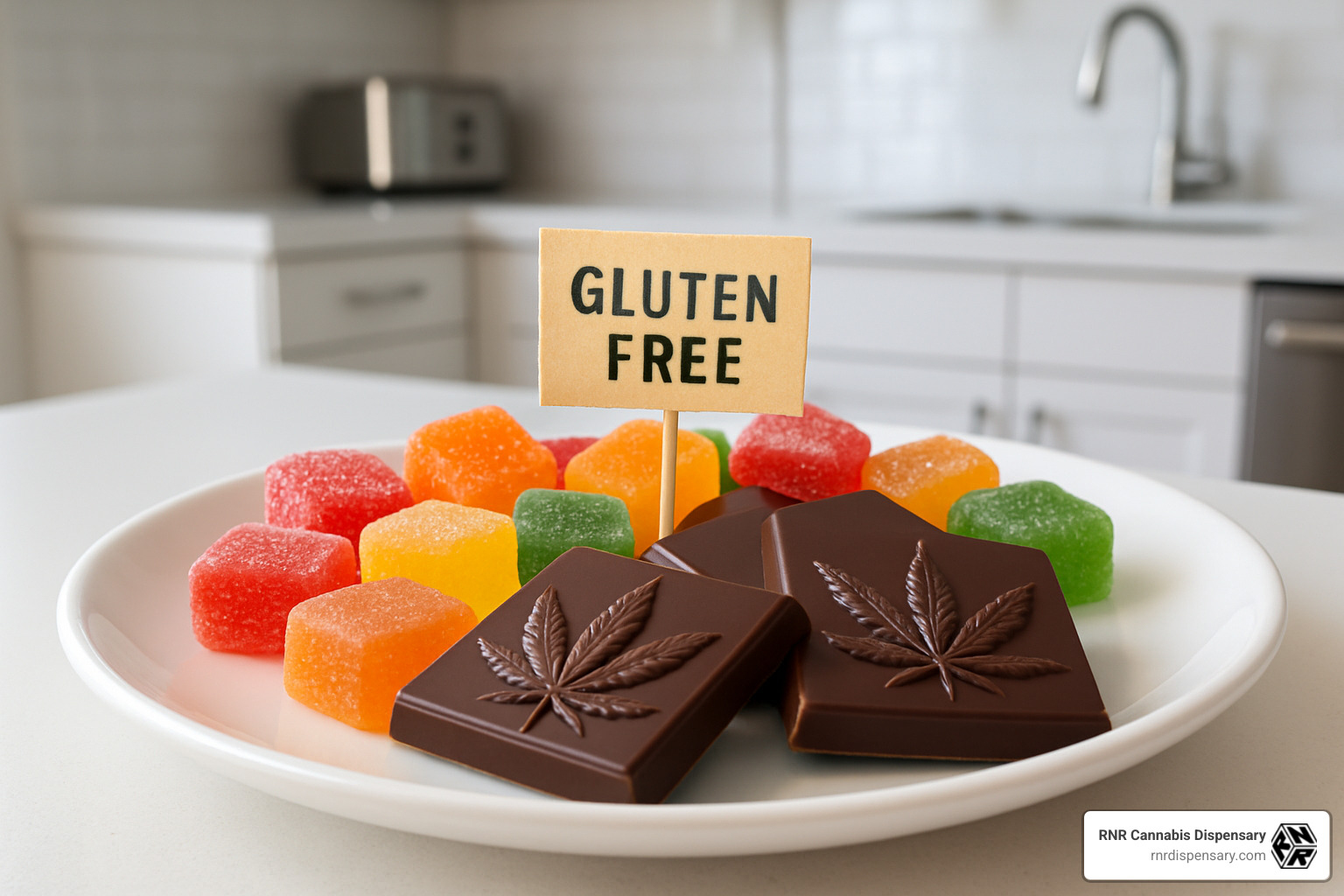Why Gluten Free Edibles Are Changing the Cannabis Game
Gluten free edibles offer a safe way for people with celiac disease and gluten sensitivity to enjoy THC without digestive discomfort. Here’s what you need to know:
Quick Answer for Gluten-Free Cannabis Seekers:
– Cannabis plants are naturally gluten-free
– Risk comes from shared manufacturing equipment
– Look for “gluten-free” labels and third-party certifications
– Popular options: gummies, chocolates, tinctures, and hard candies
– Always check ingredient lists for wheat, barley, rye, and malt
About 1% of Americans have celiac disease, but 83% remain undiagnosed or misdiagnosed. For these folks, even tiny amounts of gluten can trigger serious health issues. The good news? The cannabis industry is stepping up with more certified gluten-free options than ever before.
Brooklyn’s creative cannabis community has been asking for better dietary options. From vegan gummies infused with omega-3s to single-origin chocolate bars, the market now offers premium experiences that don’t compromise on health or quality.
As one customer shared: “Balancing a gluten-free lifestyle often makes finding suitable cannabis-infused treats a challenge.” This guide solves that problem by walking you through everything from label reading to DIY recipes.
I’m Ronald Shen, founder of RNR Dispensary in Bushwick, where we’ve curated an extensive selection of gluten free edibles for our health-conscious community. Through hosting monthly Cannabis 101 workshops in our event space, I’ve learned how important dietary accommodations are for safe, enjoyable cannabis experiences.

What Does “Gluten-Free” Mean & Why Some Consumers Require It?
Picture this: you’re enjoying a slice of pizza, and within hours you’re doubled over with stomach pain, brain fog, and exhaustion. For millions of Americans, this isn’t just a bad night


